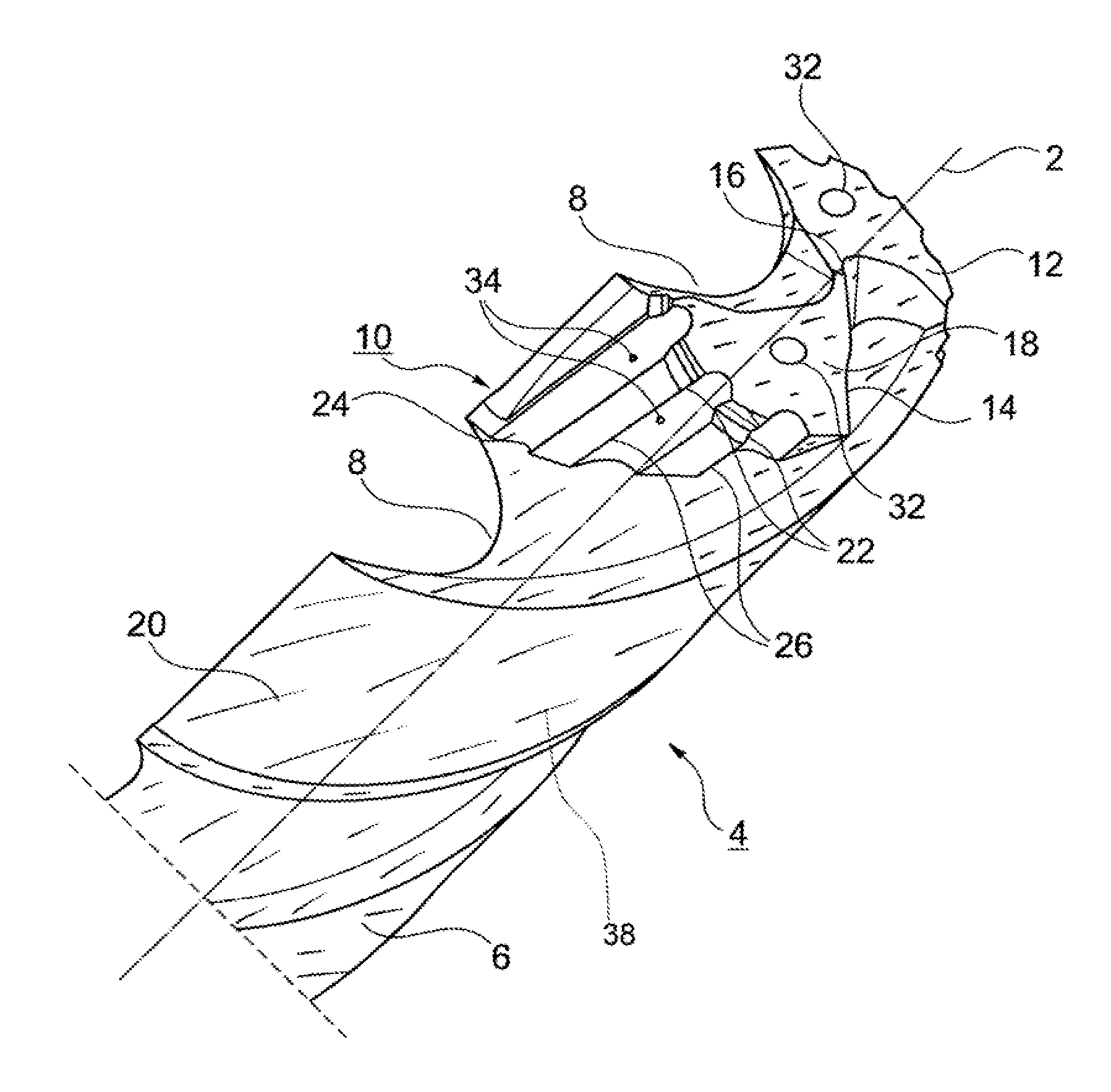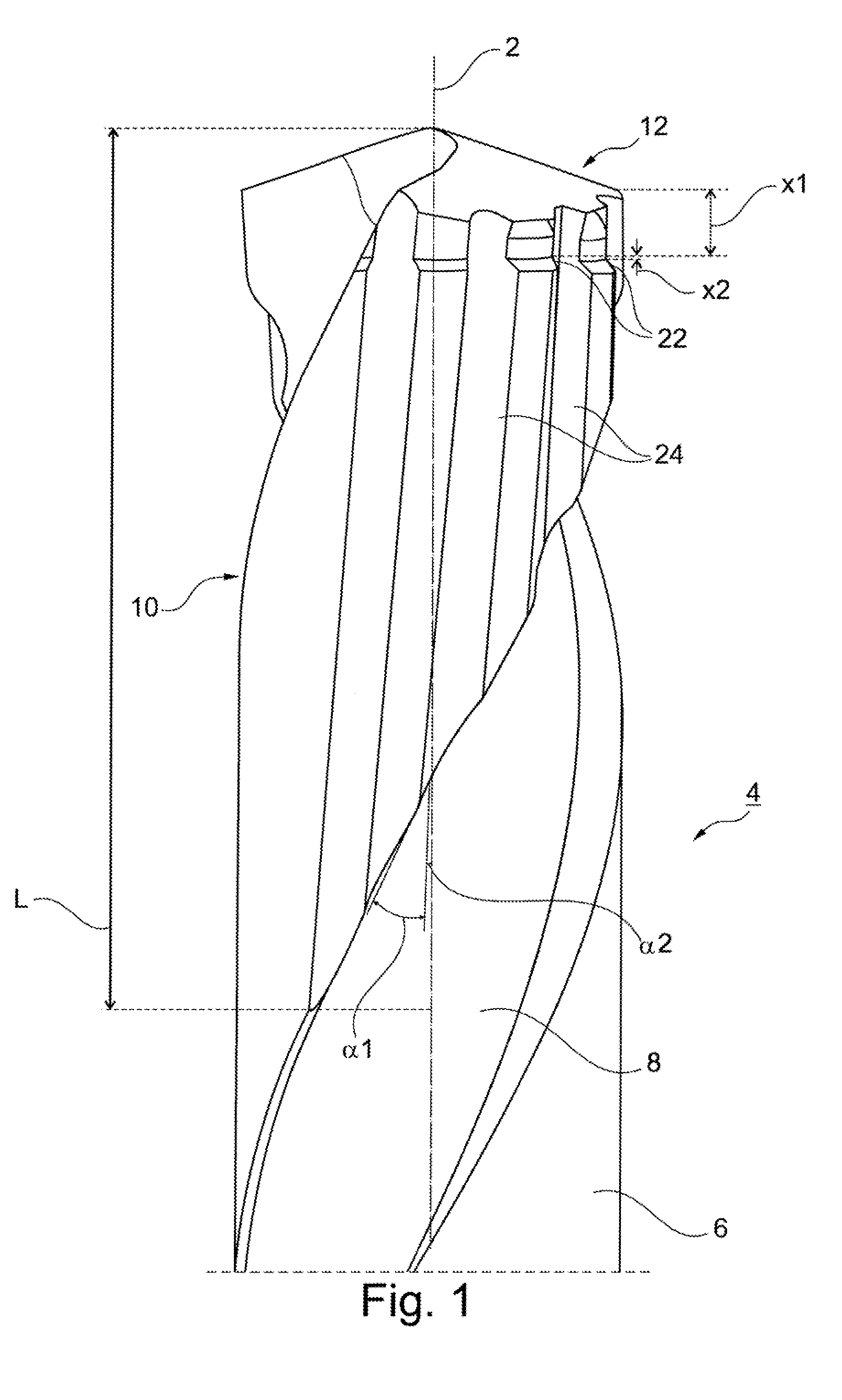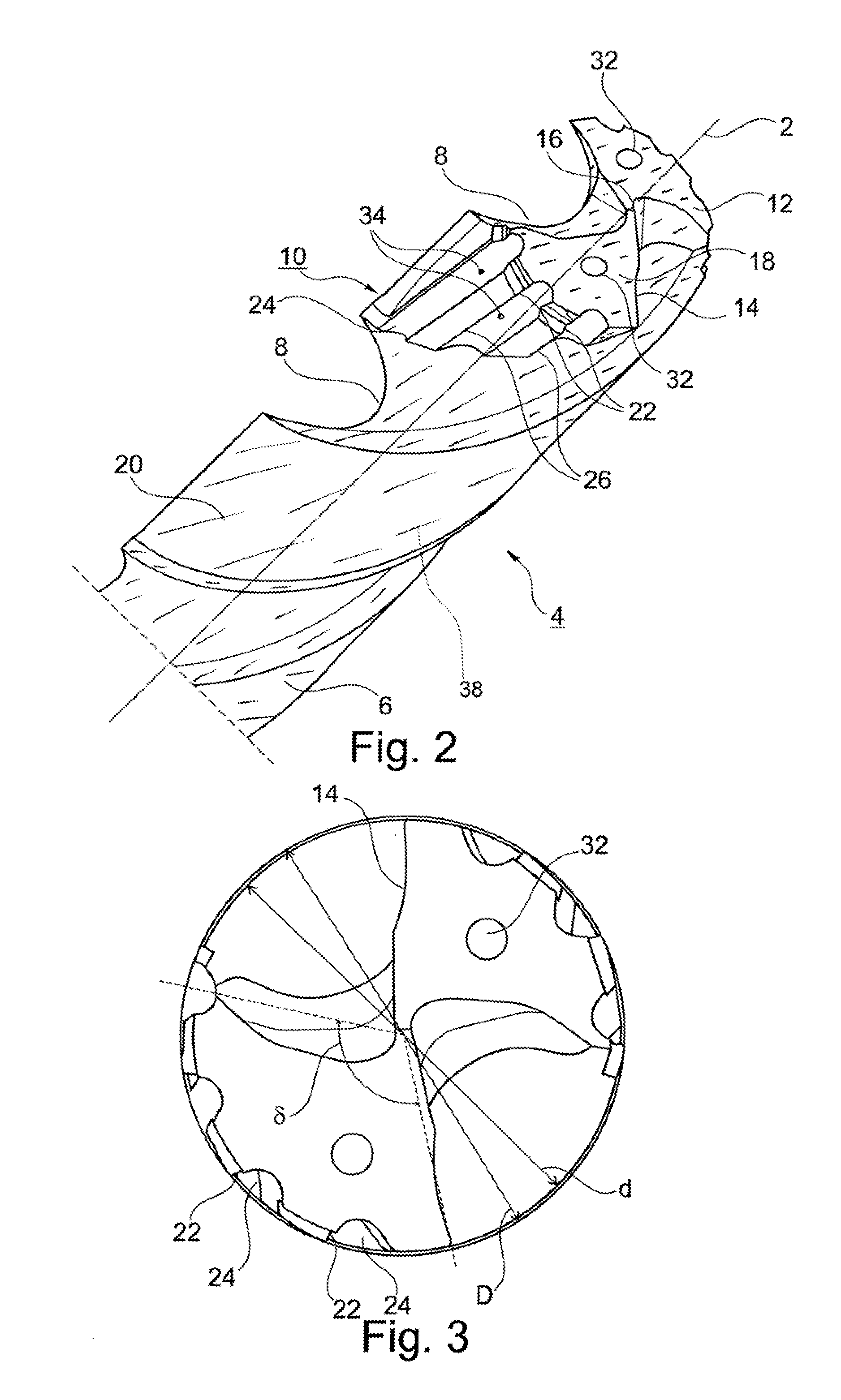Manufacturing of holemaking tools
a holemaking tool and manufacturing technology, applied in the field of process for producing tools, can solve the problems of affecting the surface affecting the quality of machined workpieces, and difficulty in transportation of chips, so as to achieve simple and cost-effective production, long service life, and avoid peeling.
- Summary
- Abstract
- Description
- Claims
- Application Information
AI Technical Summary
Benefits of technology
Problems solved by technology
Method used
Image
Examples
Embodiment Construction
[0046]A drilling / reaming tool 4, which extends in the longitudinal direction 2, hereafter tool for short, has a main body 6, which extends in the longitudinal direction 2 and incorporated in which are main chip flutes 8, two in the exemplary embodiment, which are spiraled at a first twist angle α1. In the forward region, the tool 4 has a reaming head 10. On its end face, the reaming head 10 is formed as a drilling tip 12, which in the exemplary embodiment has two main blades 14 (cf. FIG. 3), which are joined to one another in the drilling center by way of a center line 16. In the circumferential direction, the respective main blade 14 is adjoined by a clearance face 18, which in the exemplary embodiment is formed like the envelope of a cone, respectively extends up to the main chip flute 8 and is assigned to the next-following main blade 14. The fluted region of the main body 6 is additionally adjoined by a shank (not represented), by which the tool 4 is clamped in a tool receptacle...
PUM
| Property | Measurement | Unit |
|---|---|---|
| thickness | aaaaa | aaaaa |
| thickness | aaaaa | aaaaa |
| diameter | aaaaa | aaaaa |
Abstract
Description
Claims
Application Information
 Login to View More
Login to View More - R&D
- Intellectual Property
- Life Sciences
- Materials
- Tech Scout
- Unparalleled Data Quality
- Higher Quality Content
- 60% Fewer Hallucinations
Browse by: Latest US Patents, China's latest patents, Technical Efficacy Thesaurus, Application Domain, Technology Topic, Popular Technical Reports.
© 2025 PatSnap. All rights reserved.Legal|Privacy policy|Modern Slavery Act Transparency Statement|Sitemap|About US| Contact US: help@patsnap.com



